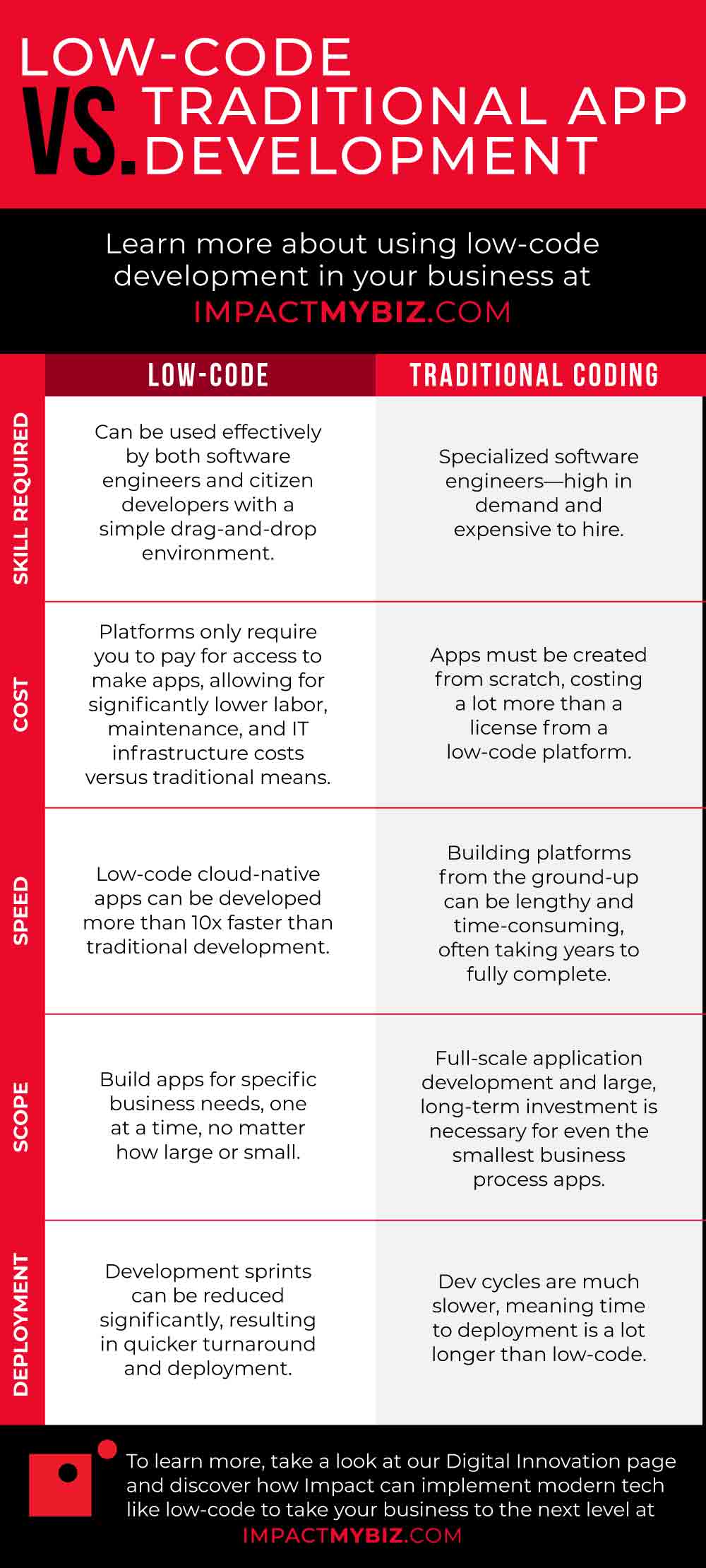Software applications are very useful to businesses, and the more customized an app is, the better the results are for the organization when trying to build a program that solves a unique problem.
The biggest hurdle most businesses run into is a lack of development expertise, experience, or know-how. Developing an application or program the traditional way can involve more people, more money, and more time than a low-code approach which provides businesses with the same tools, just simplified.
So, which is best for businesses: low-code or traditional development?
What does low-code look like in real business scenarios? Download our low-code application case study to see how low-code applications revolutionized a logistics company’s order processes.
Why Should Businesses Consider Low-Code?
The majority of SMBs simply cannot afford to invest in traditional app development. Low-code development is an alternative to traditional development that simplifies the process and makes it more accessible to businesses without the time, money, or expertise necessary for alternative development styles.
How does it work? It’s right in the name: low-code (or no-code, as it is also referred as) refers to platforms where complex and customized applications are created and rolled out in a matter of months, drastically cutting down on costs and making custom apps a far more feasible prospect for companies.
72% of low-code developers create apps in three months or less compared to six months or even years it can take to develop applications using traditional methods.
Low-code development can do this because the platform used to develop low-code apps requires comparatively little coding expertise, functioning as a drag-and-drop interface with built-in common features that can be applied with ease.
This has opened up new possibilities for businesses. Not only is it making it possible, but many organizations are now developing apps using low-code methods for a fraction of the cost.
This is not to say there isn’t a place for coders in app development. Having the help of experienced developers will still elevate the quality of what you can accomplish even with low-code programs. But even with developers, the pros of a low-code process for app development outweigh the cons. Take a look at how the two styles of app development stack up in this infographic:
